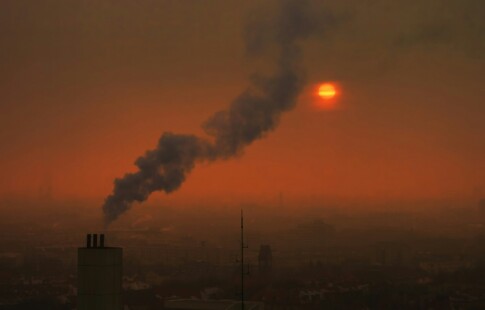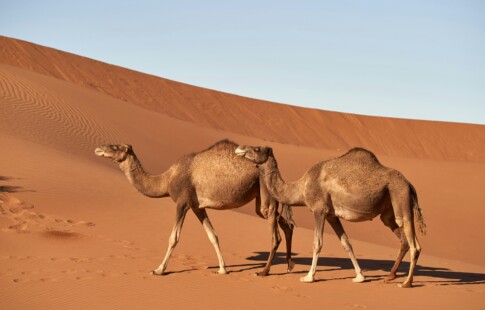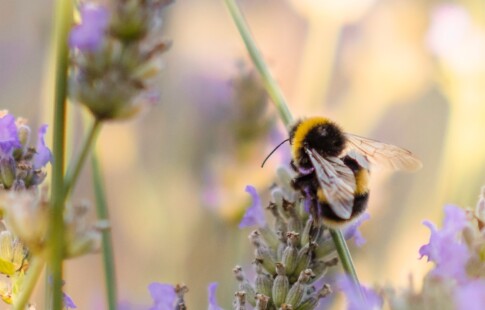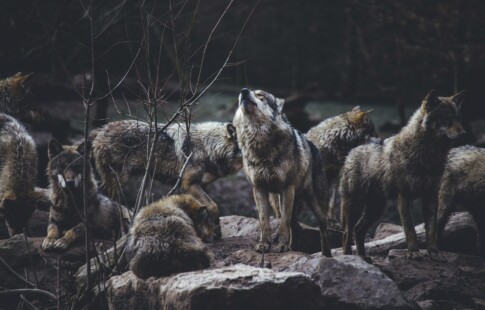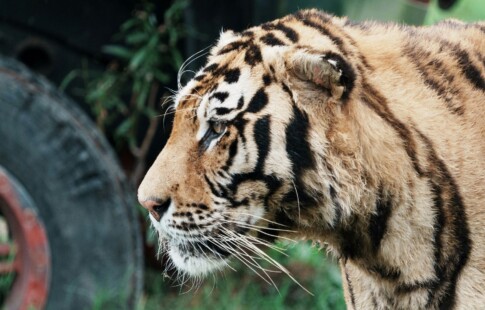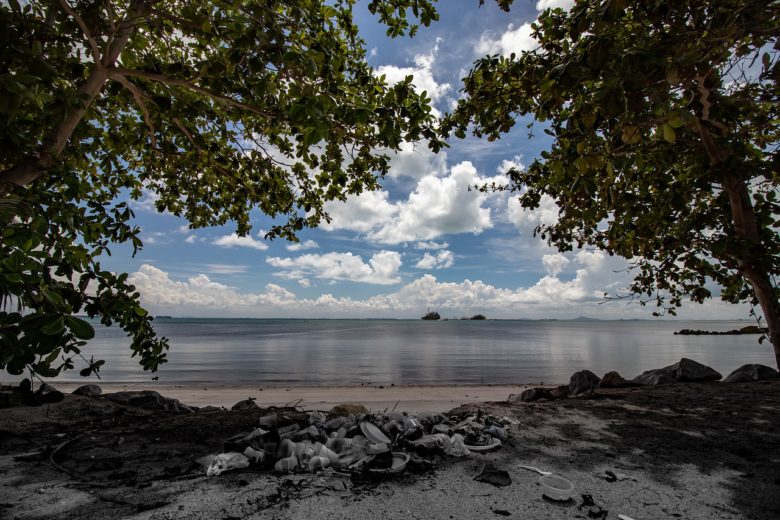
What Does Ocean Habitat Destruction Mean for Our Planet?
We are reader-supported. When you buy through links on our site, we may earn affiliate commission.
Human activities have been affecting our oceans and the life within them for centuries. But, only recently has the world begun to notice these detrimental effects. From low oxygen levels to ocean oil slicks, entire marine ecosystems are rapidly taking a turn for the worse. In many areas, our actions have even created unlivable ocean conditions, endangering marine life and, therein affecting our own economy and food supply. If we hope to recover from these effects, we must work together to restore the marine ecosystems we’ve so carelessly destroyed.
Polluted Seas
As humanity’s dependency on plastic continues to grow, so will its effect on ocean habitats. The Great Pacific Garbage Patch, for instance, stretches 1.6 million square kilometers and largely consists of plastic objects and small microplastics. Marine animals mistake this floating debris for food, but these plastics are indigestible, filling their stomachs until they starve. Thes plastic particles also spread hazardous chemicals that can climb up the food chain and destroy entire ecosystems. Currently, ocean debris directly affects more than 800 marine species.
Humanity’s demand for oil has also resulted in a more polluted ocean. Oil spills contribute about 12% of all ocean oil, while shipping, drains, dumping and drilling produce the other 88%. New methods of hunting for oil also have a significant impact on marine life. Seismic blasts used to detect new drill sites have decreased the number of zooplankton, which are an essential food and oxygen source for many species like fish and whales. Therefore, increased drilling operations have the potential to affect every level of the aquatic food chain.
Ocean Deoxygenation
But oil and plastic aren’t the only ocean pollutants. In the past decade, ocean oxygen levels have dramatically decreased. Scientists link this trend with climate change, of which humans are the main cause. Greenhouse gas emissions from industrial power plants and large-scale agriculture pollute the air with CO2, 30% of which is absorbed into the ocean. And the pace at which CO2 is polluting the seas is too rapid to ignore. In some tropical regions, oxygen levels have dropped by 40% in just 50 years. Ocean animals rely on oxygen to breathe and respond to even the slightest change in levels by seeking refuge in higher oxygen zones. And, as large fish like sharks are forced out of their environment into smaller areas, there is more competition for food sources. Once these food sources are depleted, they risk migrating to a new location or facing starvation.
New Invasive Species
Other human activities like boating and shipping can also threaten ocean ecosystems by introducing new invasive species. For example, scientists have found toxic tropical algae from the Caribbean and Pacific Ocean in the Mediterranean and North Atlantic. Their increased presence in this new territory is likely due to ballast water from ships. Recently, this invasion has caused a rise in severe human intoxications due to eating contaminated fish or shellfish. Ocean deoxygenation and rising marine temperatures — both a result of burning fossil fuels — also contribute to the rise of invasive species. As previously mentioned, when ocean zones become unlivable, native animals leave in search of sustainable conditions. Consequently, they invade new ecosystems and populate ocean habitats that were once either unexplored or too cold to be hospitable.
Endangered Marine Life
Pollution, degrading water quality and invasive species are all impacting the ocean in major ways. And no creature is safe from the negative effects our actions have caused. Approximately 150 species of ocean animals are endangered and, in most cases, humans are to blame. For instance, sea otter populations are periodically decimated by oil spills, which seal off the warming, protective bubble underneath their fur.
Warming oceans also threaten their survival by killing off mollusk populations, which the otters heavily rely on for food. Overfishing and trawling have impacted marine populations as well. About 25% of U.S. fish stocks and a staggering 90% of global fish stocks are overfished. Certain fishing methods, however, are more destructive than others. Bottom trawling, which entails dragging thick nets over the seafloor, is the most destructive method. Trawling is unselective, 90% of a trawl’s total catch is unwanted fish and marine life, which is thrown back into the sea, dead or dying. Such habitat destruction can leave ecosystems irreparably damaged.
Food Shortages and Economic Recession
Of course, our actions don’t just impact ocean habitats, they also spell disaster for our food supply and economy. Drilling for oil, laying gas pipelines, overfishing and greenhouse gas emissions are destroying marine ecosystems, resulting in a dramatic loss of biodiversity. This hinder’s the ocean’s ability to provide enough food to support the planet’s ever-expanding population. An estimated 3 billion people depend on fish as their primary source of protein.
However, those countries most dependent on fishing are expected to lose 40% of their catch potential by 2050.This rapid depletion will drastically affect the global economy, which is extremely dependent on healthy oceans. The U.S. itself depends on $2.5 trillion worth of goods and services provided by the sea. And the Great Barrier Reef alone generates 69,000 jobs and $5.7 billion in yearly revenue. Many chemicals used in pharmaceutical drugs also come from marine life. So, if we were to irreversibly destroy ocean ecosystems, we would lose the opportunity to discover these compounds.
Radical Restoration Need to Resolve Ocean Habitat Destruction
Luckily, there is still time to restore our oceans and reverse the damage we’ve wrought. One solution is to establish marine protected areas where wildlife is protected from human exploitation. Thus, endangered species can begin to repopulate. Conservationists are also reintroducing key species, like plants and corals, to depleted regions. For example, one team is replanting seaweed and deep-sea corals in distressed marine environments. This encourages the return of sea urchins, crustaceans, starfish and their predators. In some cases, up 90% of animals have returned to these restored habitats.
So, while ocean habitat destruction may be daunting, the crisis does present a number of hopeful opportunities. More people are becoming aware of their impact on ocean ecosystems and many areas are being restored. Marine conservation and sustainable use of marine resources can be achieved. But we’ll have to work together if we’re to ensure a healthy future for our oceans and the precious life they contain.
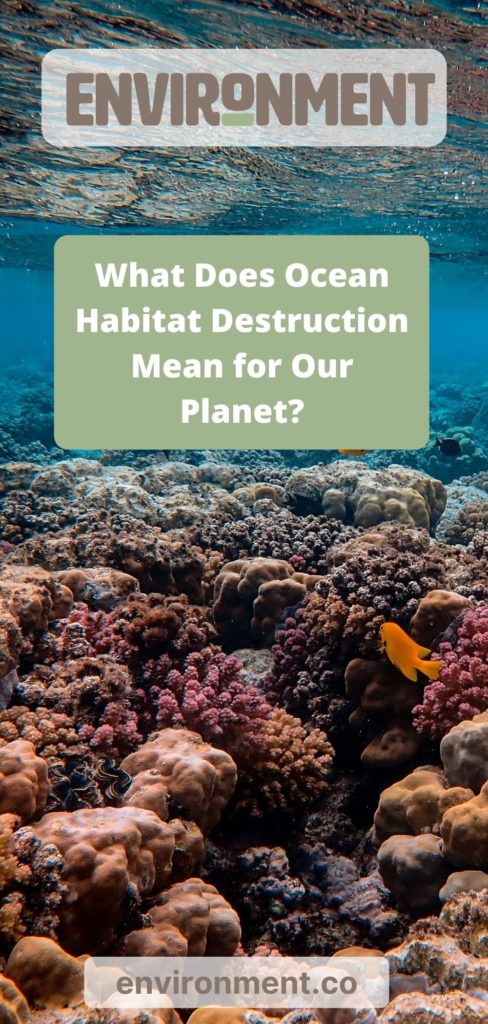
Share on
Like what you read? Join other Environment.co readers!
Get the latest updates on our planet by subscribing to the Environment.co newsletter!
About the author

Jane Marsh
Starting from an early age, Jane Marsh loved all animals and became a budding environmentalist. Now, Jane works as the Editor-in-Chief of Environment.co where she covers topics related to climate policy, renewable energy, the food industry, and more.
